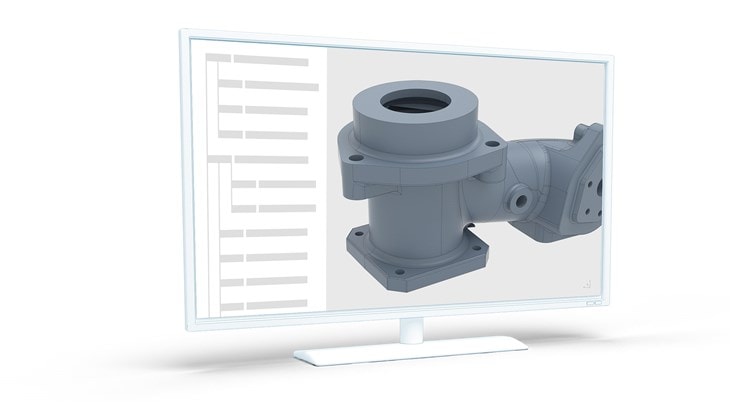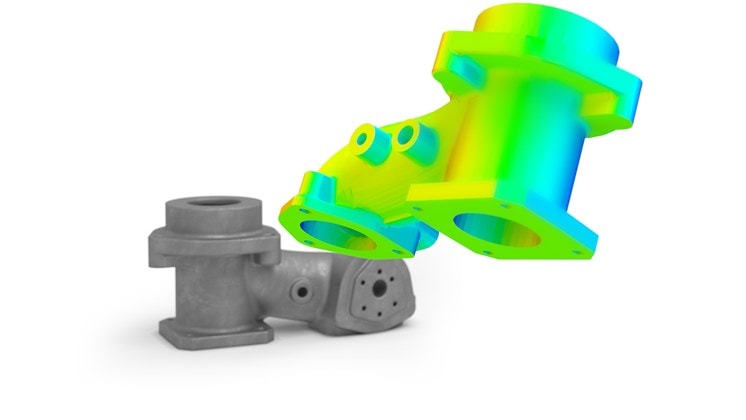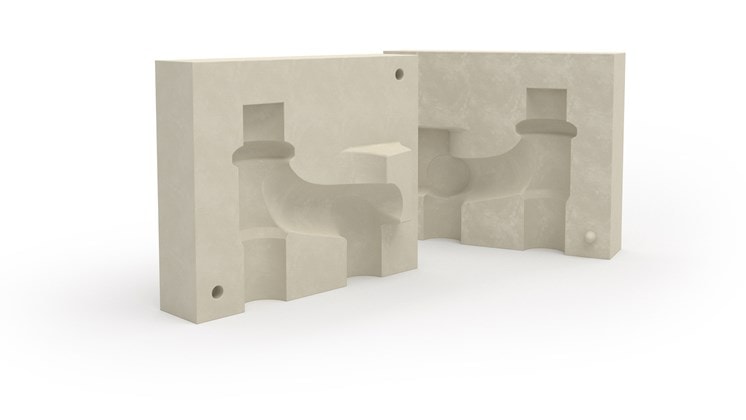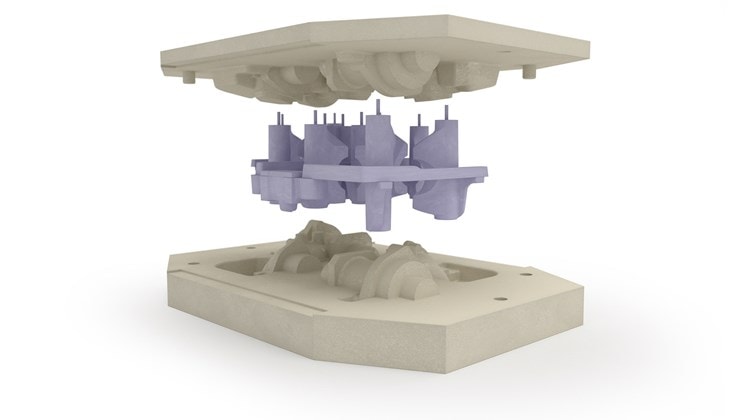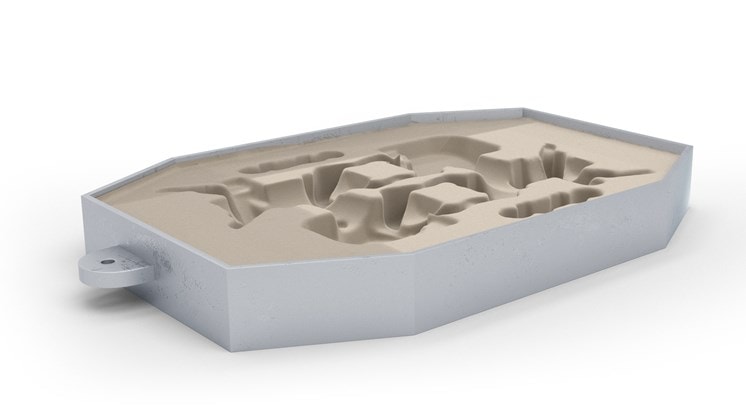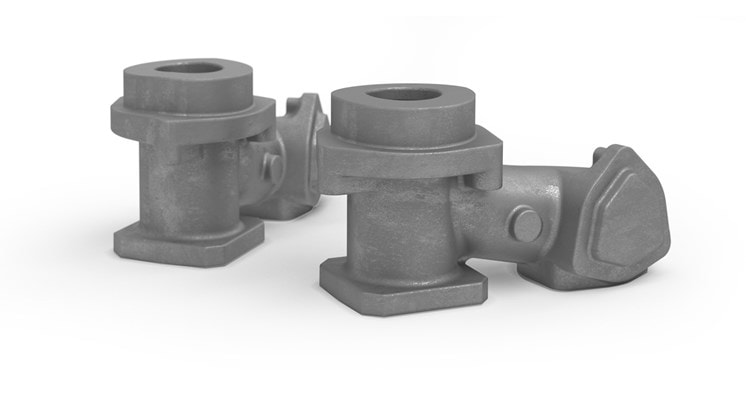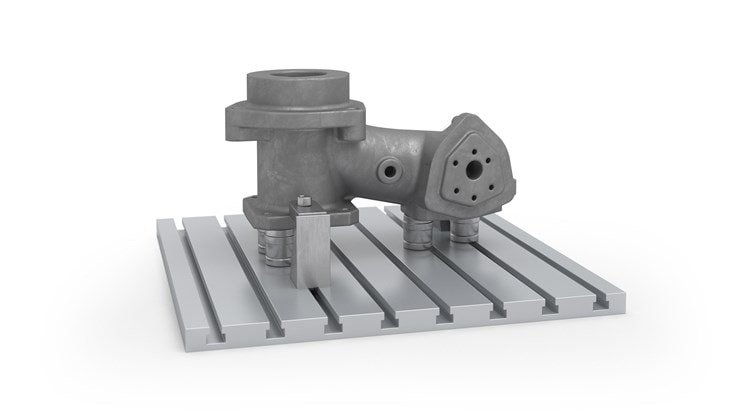Casting
3D Metrology for Sand, Pressure Die and Investment Casting
Measuring systems from GOM are used in sand, pressure die and investment casting processes to guarantee consistent quality assurance: from simulation validation via accelerating tool try-out and first article inspection up to production control and CNC machining.
GOM systems allow for inspection planning based on design data. In pattern and mold making, the targeted correction of tools and models and the inspection of fitting of mold halves, cores and sliders are possible. During try-out, cast parts are checked for shape and dimension: part geometry, material thickness, shrinkage and warpage. All measuring and inspection processes are automated for production quality control.
Part Design (CAD / PMI)
If the CAD model of a part has been provided with inspection features already during design, the 3D measurement planning and inspection can be performed in a drawing-free process directly on the PMI data set. Furthermore, the full-field geometry acquired by GOM’s non-contact ATOS system allows refeeding and adapting component and tool geometries into existing CAD data if a tool correction is necessary (advanced CAD modeling). The obtained 3D measuring data also serves for the creation of design data in the field of reverse engineering.
Simulation and Validation (CAE)
Simulations serve to compute and visualize the mold filling, sprue, holding pressure, temperature control and filling time of the cast part. The purpose is to prevent errors and to optimize the use of materials, the cycle time and the machine size by predicting the process parameters and material behavior using the ARAMIS system during materials testing. The real component geometry can be measured with the ATOS system and numerically compared to simulated data in order to optimize and validate the simulation model.
Toolmaking
3D digitization saves time and costs during toolmaking and maintenance. Controlling the individual manufacturing steps at an early stage during CNC machining of pressure die-cast tools and electrodes, wax patterns and ceramic core dies as well as sand core boxes via comparison of nominal and actual data reduces iteration loops, especially for multiple cavities. In try-out, GOM’s ATOS system offers 3D data to target the area for tool correction.
Pattern Making
The systematic shape and dimension control of wax and foam patterns, wax assemblies, pattern plates and equipment ensures and accelerates the subsequent process steps in mold production and casting processes. By controlling the milling results at an early stage with GOM’s ATOS system, possible errors in pattern plates and pattern equipment can be identified and eliminated.
Mold Making / Core Making
Measurements of molds and cores, for example made of sand or ceramics, ensure the process quality. The measuring data of molds and cores from GOM’s ATOS system enables virtual assembly analysis of mold halves and cores, which serves for the inspection of parting surfaces regarding offset, fitting and form fit of mold halves and core clearance. In investment casting, the wall thickness of the ceramic mold can be inspected to estimate its quality and the formation of burrs.
First Article Inspection / Series Inspection
The first article inspection can be carried out based on the CAD model or PMI data set and CMM inspection with features such as GD&T. The full-field 3D inspection performed with GOM’s ATOS systems leave no area of the component unchecked. In quality control during series production, automated, production-related and mobile measuring cells, such as ATOS ScanBox, reduce scrap and rework time. Parts do not have to be transported to remote measuring rooms.
CNC Machining / Adaptive Machining
With its back projection function, the ATOS 3D sensor projects features such as isolines and punch marks straight from the software onto the real part. As a result, the conventional marking of heavy cast blanks is no longer needed. Efficient part alignment for CNC machining can be achieved. In addition, 3D measuring data provides the basis for adaptive manufacturing processes like adaptive machining.

